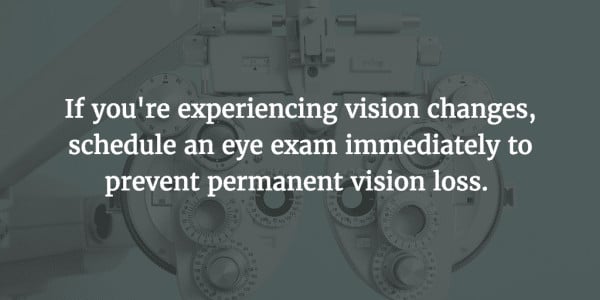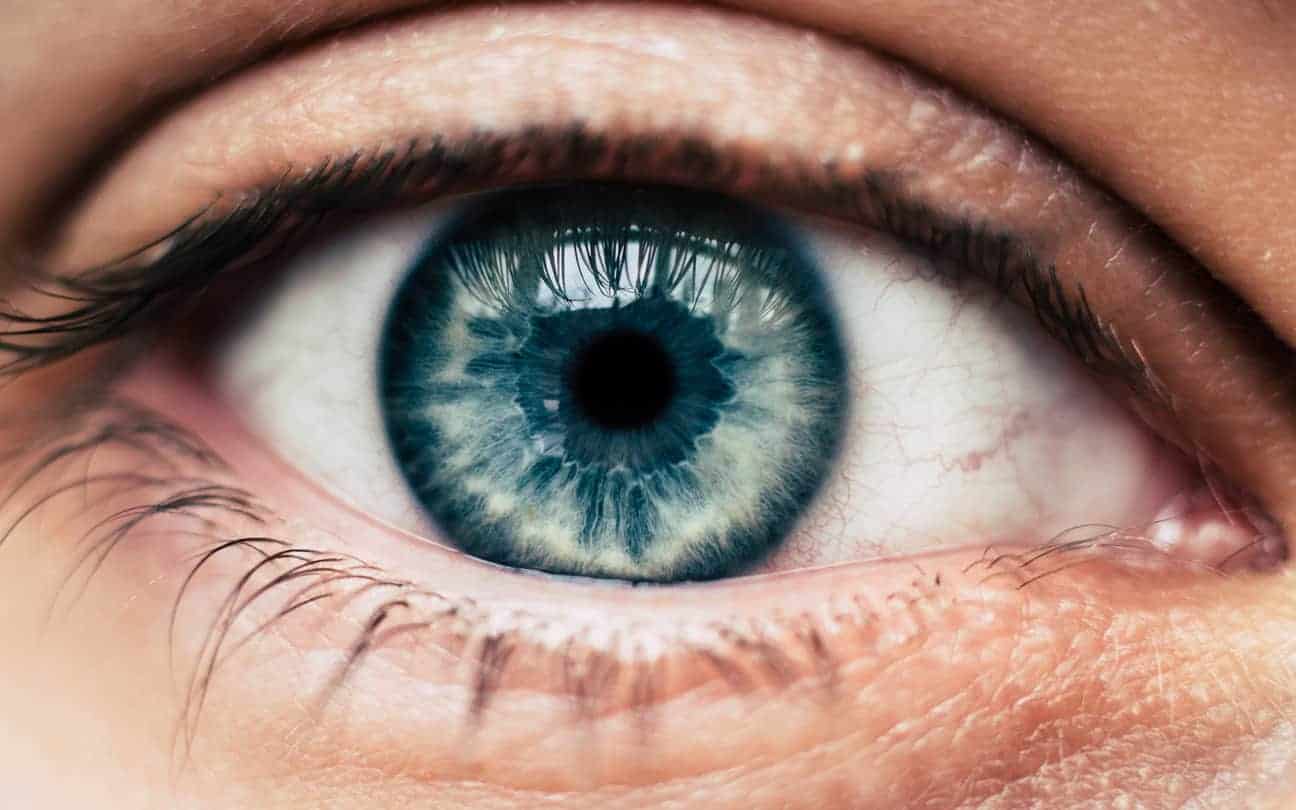Serving Loveland, Fort Collins, Greeley, Longmont & Areas Nearby in Colorado
In some ways, your eye is like a camera. The lens in the front of your eye focuses light onto the retina—the nerve layer at the back of your eye that senses light and sends images to your brain. Similar to the film in a camera, the retina must be flat against the back wall of the eye in order to function properly.
If the retina is torn, detached or blocked, it is crucial to seek immediate treatment before the problem escalates. To schedule an appointment with our experienced ophthalmologist, Dr. John Kirk, please contact Kirk Eye Center today online or at (970) 669 - 1107 . Our Loveland office welcomes patients from across Northern Colorado, including Fort Collins and Windsor.

Retinal Detachment
Retinal detachment is a serious eye condition, which occurs when the retina separates from its surrounding tissue. Left untreated, a detached retina can result in permanent loss of vision.
A retinal tear is frequently an early issue that leads to retinal detachment. This condition may occur suddenly without warning, but can often exhibit symptoms of floaters, flashers and darkened peripheral vision.
You could be at risk for suffering a detached retina if you:
- Have experienced an eye or face injury.
- Have undergone cataract surgery.
- Have a family history of retinal detachment.
- Are severely nearsighted.
- Have diabetic retinopathy.
- Are experiencing age-related macular degeneration.
Successful treatment of retinal detachment depends on the severity of the detachment, the location of the retina and any underlying causes. If the area of detachment is relatively small, Dr. Kirk can address the issue with a laser treatment. Severe cases of detachment may require more complex surgical alternatives.
Floaters and Flashes
Floaters are tiny clumps of cells or tissue that form within the eye’s vitreous —the clear gel that fills the interior cavity of your eye. These clusters of material can cast shadows on the retina.

Flashes can occur when the vitreous gel in your eye pulls away from the retina. As the vitreous fibers pull on the retinal nerve centers, your eye experiences the sensation of a flash or streak of light. Flashes can appear in a single location or in multiple areas across your field of vision.
Flashes and floaters are often a common result of natural aging. The vitreous gel in your eyes tends to shrink and liquefy as you grow older, pulling away from the back wall of the eye. This condition (often referred to as vitreous detachment) is most common in people who are nearsighted, have suffered an eye injury or have had cataract surgery.
In and of itself, vitreous detachment isn’t necessarily dangerous, but should be monitored to ensure a retinal tear does not happen in the future.
Flashers and floaters may be a sign of a retinal tear or detachment if:
- Your quality of vision suddenly diminishes.
- Your periphery (side) vision darkens, as though a shadow or curtain has appeared.
- The frequency of flashes suddenly increases.
- You notice a sudden increase in the number and size of floaters.
Retinal Holes & Tears
The retina is an extremely thin tissue, which can tear when the vitreous tugs on it. If any blood vessels are present at the location of the tear, blood will leak within the eye. Retinal tears are painless. While some people with retinal tears experience noticeable symptoms such as floaters, cobwebs and intermittent flashes of light, others notice hardly anything at all.

Dr. Kirk performs a procedure to treat small retinal holes and tears. This safe, effective procedure addresses the immediate retinal problem while lessening the risk of retinal detachment in the future.
Branch Retinal Vein Occlusion (BRVO)
A branch retinal vein occlusion (BRVO) is a blockage of one of the small blood vessels that drains blood from the retina. The retina constantly produces pictures of everything you see. When a retinal vein becomes blocked, part of the retinal blood flow slows or stops. Suddenly and usually without warning, a patch of retina loses some of its picture-taking function and you may become aware that part of your field of vision has darkened.
When your retinal veins and arteries are working normally, the retina is continuously replenished with oxygen-rich blood transported by your arteries and taken away by your veins. When a vein—drainage channel—is blocked, the blood becomes backed up and causes swelling (edema) and bleeding in the retina, preventing nourishment.
The extent of damage and the visual symptoms produced depend on the size of the blocked vein and its exact location:
- Blocked Peripheral: If the blockage occurs toward the peripheral part of the retina, you may hardly notice it.
- Blocked Retinal Center: If blockage occurs in or near the macula (the central zone of the retina that is critical for sharp vision) and causes it to swell, vision is likely to be reduced or distorted.
A more serious threat to vision can develop later from a complication called neovascularization (neo = new; vascular = blood vessels). A month or more after the BRVO, new blood vessels may begin to appear in the retina, as if they were trying to re-nourish it. These are not normal blood vessels, however; they are very fragile and bleed easily. They are dangerous to the eye because they can lead to additional problems that damage vision.
Neovascularization only occurs in about one in five BRVO patients. If it develops in your eye, it should be treated before causing harm. In most cases, there are no warning symptoms, but occasionally there are, such as the sudden appearance of new floaters or a sudden decrease in vision.
Several factors combine to bring on an occlusion. The usual situation is that something causes the blood flow in a retinal vein to slow down so much that it permits a clot to form there. The clot prevents blood from flowing freely.
The most common reason for slowed venous blood flow is, surprisingly, a hardened artery (arteriosclerosis). If a stiff artery happens to lie across a vein and compresses it, it can slow the flow of blood in that vein in the same way that a log across a stream can obstruct the flow of water. Because arteriosclerosis occurs so often in people who have hypertension, it is considered to be a risk factor for the development of BRVO.
Other conditions that can lead to a BRVO are:
- Venous inflammation (vasculitis), which can plug the vein.
- Some rare blood conditions that produce a greater-than-normal tendency for blood to clot.
- Estrogen medication (as in oral contraceptives) can introduce a slight risk of blood clotting.
BRVO Examination & Treatment
In order to diagnose and treat your BRVO, you will have a complete eye examination and vision test. This may include:
- Dilating your pupils with eye drops so the insides of both eyes can be studied. An ophthalmoscope and slit lamp (clinical microscope) will be used to look inside your eyes; they are especially useful for studying the retina and its blood supply.

- Taking retinal photographs to help determine the extent of the problem.
- An angiogram—photographs of blood vessels. For this test, an orange-colored dye (fluorescein) is injected into a vein in your arm and immediately followed by a series of retinal photographs that track the dye and time its flow as it travels through the eye’s blood vessels. The angiogram helps identify the exact site of the vein’s blockage, the extent of damage to the capillaries (the smallest retinal blood vessels), and whether or not neovascularization has developed.
- A referral to an internist or family physician for a complete check-up after your eye examination. BRVO can be associated with medical conditions that affect the rest of the body such as high blood pressure, which also increases the risk of a heart attack or stroke.
Once a BRVO has occurred, there is no simple way to speed the healing process along. Eventually, over several months, the blocked vein may re-open on its own, or some nearby blood vessels (called collaterals) may develop and reroute the blood flow around the site of blockage. Either of these may help restore at least part of the lost retinal function.
If neovascularization develops, a type of laser surgery called panretinal photocoagulation (PRP) can help reduce or even eliminate the abnormal blood vessels. PRP is not intended to improve vision directly. It reduces the risk of further vision loss from internal bleeding or, possibly, from a retinal detachment.
PRP is preformed on an outpatient basis. It consists of making hundreds of tiny laser spots in and around the damaged part of the retina. If the neovascularization does not respond to this treatment by decreasing substantially within a month or so, additional laser PRP can be applied.
After a BRVO, the central retina (macula) sometimes remains swollen for months, reducing vision significantly. To help minimize the macular swelling, injected medicines can sometimes be used. Its risks and intended results, however, are distinctly different from the laser PRP technique used for treating neovascularization.
If you are under age 50 or so, a BRVO may not impair your vision much, if at all. Even if vision is reduced initially, it has some potential for returning, perhaps even to its previous level, over the next few months. If neovascularization occurs, it can be treated with injected medicines or laser PRP. If you are older, good visual recovery is not as likely. But even if some reduced vision remains, the degree of impairment is not likely to be severe.
Regular follow-up examinations are important to protect your eyesight. Your eyes should be checked regularly for potential late complications, such as neovascularization or macular edema, and for the development of a second vascular occlusion in either eye.
Central Retinal Artery Occlusion (CRAO)
An occlusion (blockage) in the central retinal artery may be thought of as a small stroke within the eye. It occurs suddenly, usually causing partial or even complete vision loss in one eye. Once it has happened, your vision may not get any better, but it should not get any worse unless you have another occlusion, which is unlikely.
The central retinal artery is the main blood vessel that supplies blood and oxygen to the retina. If the retina stops receiving oxygen from the central retinal artery, it loses cell life quickly, within minutes. Since the retinal cells are a vital part of the visual system, vision will be destroyed.
Whether the entire retina or just a part of it is harmed depends on where the blockage occurs. If the main segment is blocked, you can lose most or all vision in that eye. If only one of the side branches is blocked, only part of the field of vision in that eye will be lost.
The central retinal artery can become clogged by a blood clot or by pieces of hardened material that have broken off from the wall of some other artery in the body. There are a number of possible problems that can result in small fragments (emboli) getting loose in the circulation. Most are related to:
- Atherosclerosis
- Hypertension
- Heart valve abnormalities
- Inflammatory vascular conditions (arteritis)
You did not cause the occlusion by using that eye, nor will you ever harm the other “good” eye by using it.
CRAO Examination & Treatment
During your eye exam at our Loveland office, your pupil will be dilated with eye drops, so that the retina and its blood vessels at the back of the eye can be examined and evaluated. If fat or calcium deposits are found in the retinal arteries, it could indicate similar problems in other blood vessels (for example, reduced circulation in the brain might indicate an increased risk of stroke). Because of this possibility, you may be referred to a neurologist or neurosurgeon for further tests and evaluation.
If the occlusion can be diagnosed and treated in the first hour or so, some emergency treatment may be tried in an attempt to soften the eye. The goal is to increase the chance that normal blood flow will push the block out of the way and lessen the damage with treatments such as:
- Medication
- Massage of the eye
- A tiny needle puncture into the eye to drain away some fluid
It is rare, but possible, to recover some vision without treatment such as when a blockage that has been present for only a short time (less than two hours) becomes unblocked. The clot or fragment may shrink or simply move out of the way, renewing the circulation.
Central Retinal Vein Occlusion (CRVO)
The central retinal vein (CRV) is the main blood vessel that drains “used” blood from the retina. When this vessel is blocked, the entire retinal bloodstream swells and backs up. Much like, CRAO, this blockage of the CRV blood vessel is like a small stroke in your retina. The abrupt disturbance in the retina’s blood circulation usually causes a rapid reduction in vision.
When that happens:
- Fresh blood cannot enter the retina. Without the oxygen that is normally brought by the blood, the retina slowly starves and some retinal cells die.
- Hemorrhages (bleeding) occur in the retina.
- The reduced blood supply sets the stage for the possibility of even more damage to the retina. Months later, the starved retina sometimes starts to grow new blood vessels. This process is called neovascularization, and though you might think that new blood vessels are just what the retina needs, these vessels are not normal. They are extremely fragile, bleed easily, and can lead to scarring of the clear tissues inside the eye. Any of these complications can further obscure the remaining vision.
The usual cause of CRVO is a blood clot that forms in the vein. That can happen whenever something slows down the normal flow of blood, for example:
- Pressure on the vein from an overlying hardened artery (arteriosclerosis) can slow the flow of blood in the same way a fallen log tends to obstruct a stream.
- Increased fluid pressure within the eye (glaucoma) or an inflammation in the vein wall (vasculitis) can also slow blood flow.
- There may simply be an increased tendency for blood to clot—this is a rare complication in some women taking oral contraceptives and in certain medical conditions.
Most causes of CRVO are related to aging changes and are more likely to occur in patients who have atherosclerosis, hypertension, diabetes or glaucoma.
CRVO Examination & Treatment
A complete eye examination will be performed to diagnose your CRVO including a test of your vision, which will involve:
- Checking the pressure inside your eyes with a painless test called tonometry. Depending on the type of tonometer used, you may be given anesthetic eye drops.
- Enlarging (dilating) your pupils with eye drops so the insides of both eyes can be studied.
- An ophthalmoscope and a slit lamp (clinical microscope) will be used to look inside your eyes and study the retina and its blood supply.
- Retinal photographs may be taken to determine the extent of the problem.
- An angiogram (photographs of blood vessels) may be made which involves injecting a yellow-orange dye (fluorescein) into a vein in your arm immediately followed by a series of retinal photographs that track the dye and time its flow as it travels through the eye’s blood vessels. The angiogram also helps identify the site of the vein’s blockage, the extent of damage to the capillaries (the smallest retinal blood vessels), and the presence of neovascularization.
- Referral to an internist or family physician to make sure the CRVO was not caused by an underlying medical condition.
It’s important to seek treatment right away. The blocked vein will re-open on its own or nearby blood vessels may expand and redirect the flow of blood around the blockage site, but the vision that has been lost is not likely to return to normal.
If neovascularization develops later, injected medicines can help to lessen the ongoing damage. In addition, a type of laser surgery called pan-retinal photocoagulation (PRP) can help reduce the number and severity of the abnormal blood vessels. In the procedure, many hundreds of tiny laser burns are made in the retina during a 15- to 30-minute operation. The treatment is generally painless and can be done on an outpatient basis. If the neovascularization does not subside sufficiently within a few weeks, additional laser treatments can be given.
PRP is not likely to improve vision directly. It is designed to reduce the risks created by neovascularization, such as damage from internal bleeding or the development of neovascular glaucoma—a much more serious condition than the common type of glaucoma that is sometimes a cause of CRVO. Occasionally the laser cannot be used, especially when there are opacities (dense blood or cataract) within the eye that block the laser beam from reaching the retina.
After a CRVO in an older patient, vision may not get very much better. Many eyes remain legally blind. Younger patients (under age 50) are more likely to recover some vision, even without treatment, but it may take many months, and at best their eyesight will not be as good as it was before the occlusion occurred.
Routine eye exams are important after a CRVO. Our ophthalmologist watches for the development of potential late complications, especially neovascularization and glaucoma, or even a pending problem in the other eye.
A prompt eye exam is important if you should notice any brief episodes (a minute or so) of vision loss in your other eye. Permanent loss may be prevented by quick action.
Fortunately, complications of retinal vein occlusions are not common, and a CRVO is unlikely to occur in your other eye.
Schedule a Consultation Today
If you’ve noticed vision changes or are concerned you may have a medical retina problem, please contact our experienced ophthalmologist, Dr. Kirk, in Loveland today at (970) 669 - 1107 . The Kirk Eye Center serves patients in Loveland, Fort Collins, Windsor and surrounding areas of Colorado.

